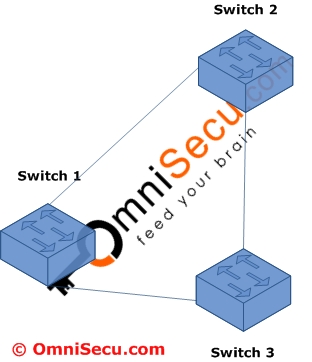What is Broadcast Storm
In practical Local Area Networking, it is common that the switches are interconnected for redundancy. When switches are interconnected, the network will not fail completely even one if the connected link fails.
When switches are interconnected for redundancy as shown below, another serious network problem can occur, which is known as broadcast storm.
The Layer 2 traffic can be classified as unicast (one to one), multicast (one to many), and broadcast (one to all). Broadcasts and Multicasts are required for the normal operation of the network. MAC addresses for broadcast and multicast are given below.
• Broadcast Destination MAC address - FF:FF:FF:FF:FF:FFF
• Multicast Destination MAC addresses - 01:00:5E:00:00:00 to 01:00:5E:7F:FF:FF
In case of a broadcast and multicast switch need to forward the frame out all its ports.
For unknown destination MAC addresses also, the switch need to forward the Ethernet frame to all ports (known as flooding) except the source port, to make sure that the frame reach the destination.
Broadcasts from each network segment are received and processed by every device in the network. Most of the network devices discard broadcasts because these broadcasts may be irrelevant to those devices. These broadcasts can consume large amount of available network bandwidth.

When switches are interconnected for redundancy as shown above, a broadcast originating from a device connected to any switch, can cause the circulation of broadcasts around the network and can saturate the network consuming all available bandwidth. This network condition known as a broadcast storm. Broadcast storms consume entire bandwidth and deny bandwidth for normal network traffic.
Broadcast storm is a serious network problem and can shut down entire network in seconds.
Broadcast storms are prevented in networks using Spanning Tree Protocol.